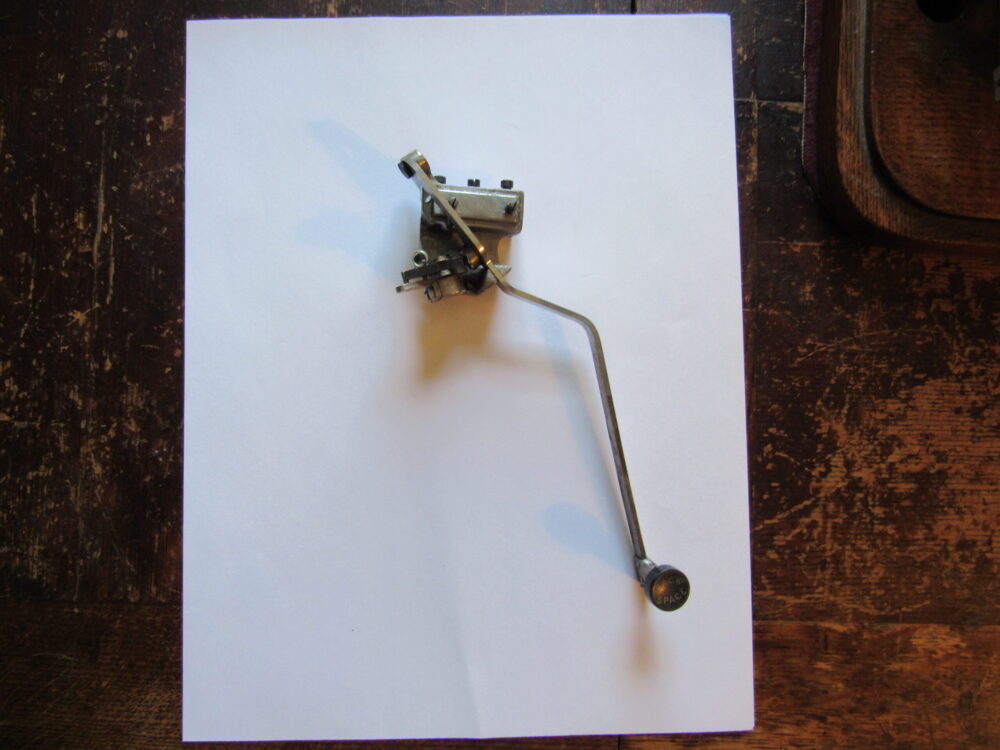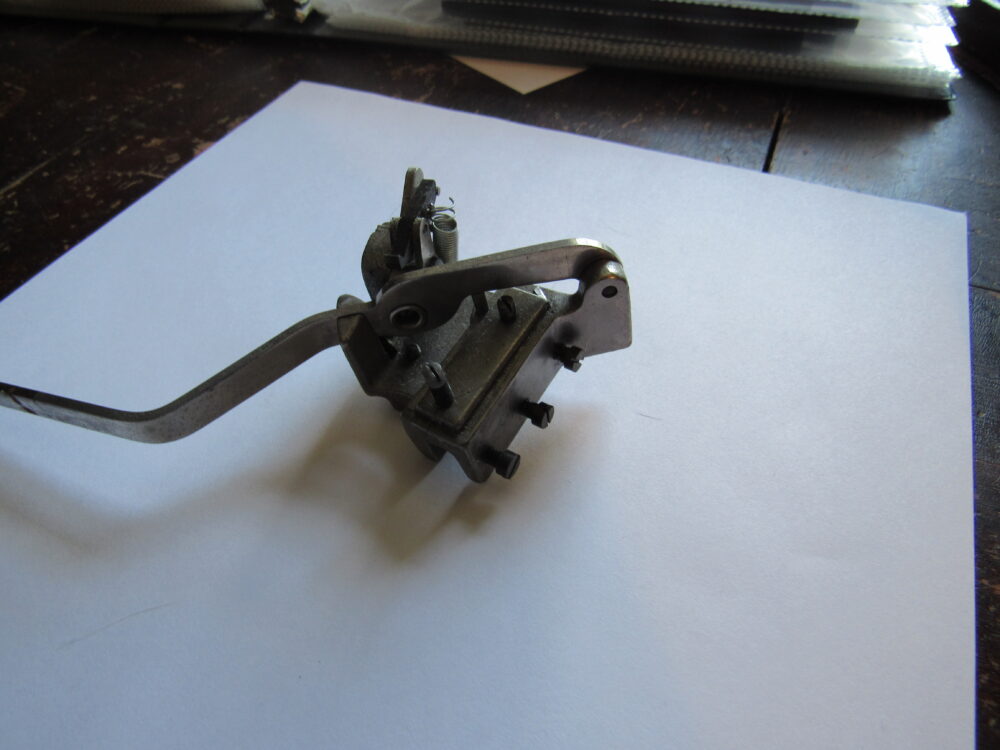Many assume that typewriters have always had a key to go back one space, to add a missed character, or perhaps to strike an error. However it was many years before the backspace became mainstream.
Pre-1900, very few typewriters had a backspace key, notably the Burns typewriter, photo courtesy of Tony Casillo, had one that seemed to have been added by a sales office, rather than at the factory. This was likely added by the sales office or as an aftermarket device.
There is evidence that Hammond may have been the first to offer a backspace option as early as 1898. However a patent for the Travis typewriter from April 7, 1897 may have been the first to come up with the idea.

Throwing a curveball into everything is that a violinist named Justin Gilbert received a patent for an actual “backspace” mechanism which looks like it would be right at home with a Sholes and Glidden.
It wasn’t until around 1906 that companies like Blickensderfer, Densmore, Remington, and others got on the backspace bandwagon. Finding out who was the first is very difficult because machines got upgraded all the time, and the patents themselves are very dense.
It helps that we can look back and at least see where it’s not present, such as on the Jewett, Sun #2, early Blickensderfer’s and Hammond’s, Franklin, Densmore, and Fox.
The Hammond Typewriter company, for its part, debuted an installed backspace key for the No. 12 around 1906, but there is evidence the company sold an optional add-on as early as 1898. This came in the form of an iron-casted bracket that affixed to the rear-right of the frame.

Note that as of December 1st, 1898 the Hammond “back spacer” became standard issue with all new machines.
Ephemera is hugely important because it helps researchers establish a timeline. December 1st, 1898 the Treasurer of the Hammond Typewriter Company, Mr. Fred S. Barstow, writes a letter to a customer about an optional back-spacing mechanism for the No. 2. This mechanism is likely the cast iron bracket below.

The key, a simple lever action, pushed a hook up, catching on the carriage rail, and pushing it back one space.












The backspace key was so popular that the company made it a standard feature almost immediately, and a permenant fixture with the No. 12.
